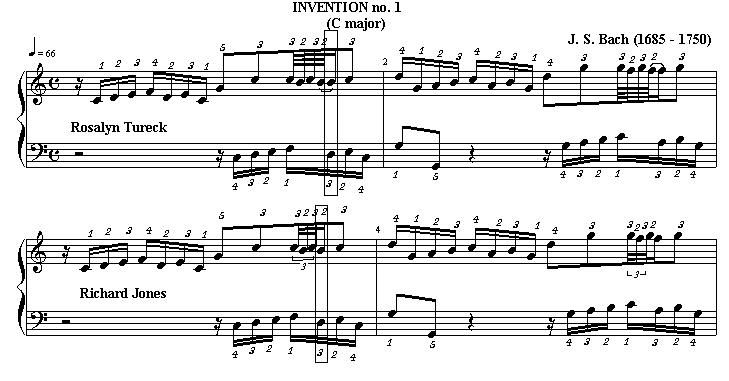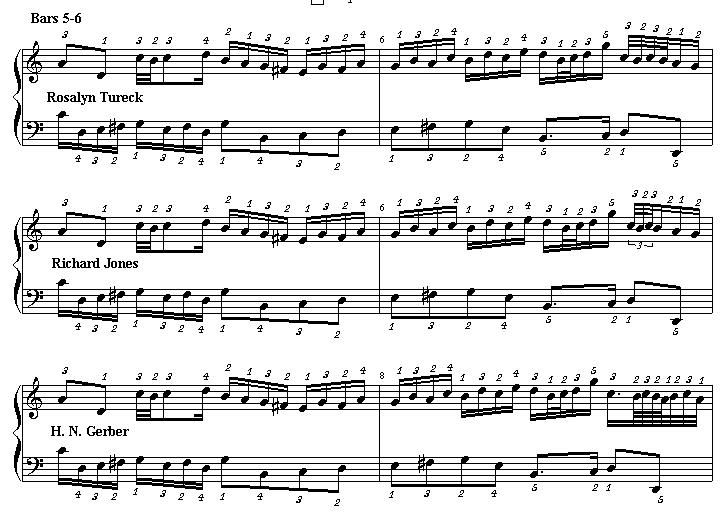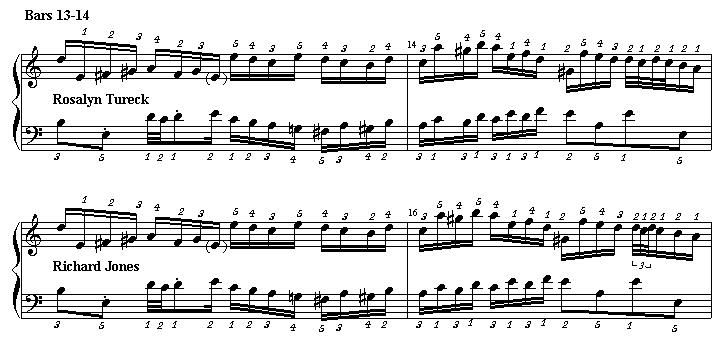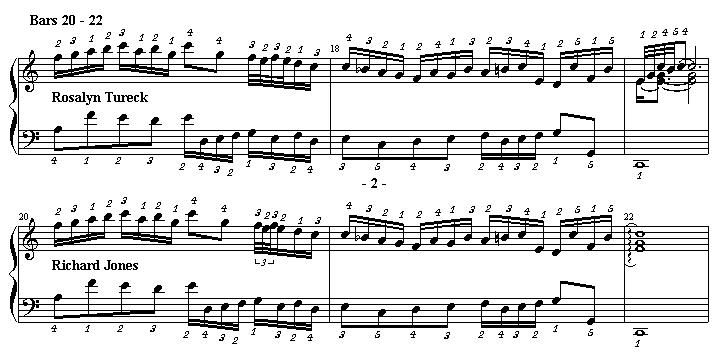I have listened to the piece and in bars 1 and 2 there are twiddly bits. I do not know the name for these and apologise.
You are forgiven.

The twiddly bits are ornaments. It is not at all clear if Bach has provided them himself, not only on bars 1 and 2, but also on bars 5, 6, 8, 9, 14, 13 (LH), 15, and 20.
However on the score I am using the notes to be played quickly are bcb in bar 1 and in bar 2 are fgf. Now when I play them the sound seems different to the recording. Obviously I do not expect to sound the same but the notes seem to be different particularly in bar 2.
Yes, that is how I learned them last century

. You probably have an old edition or one that does not pay much attention to these matters

. Unfortunately this realisation is now considered incorrect. Baroque ornaments in 99% of the case should start on the upper auxiliary, not on the main note. So “bcb” and “fgf” are out, and “cbcb and “gfgf” are in. However it is not clear how exactly the ornament should be played.
Consider and compare these two possibilities for bars 1 - 2:

The first one is by Rosalyn Tureck, and it is the way I play and teach it. The second one is by Richard Jones. What is the difference? At speed it is unlikely anyone will be able to detect if you are playing the cbcb as 32 notes or as 16 triplet notes (marginally slower). And in any case, most performers will not play ornaments metronomically but will stretch time around it if necessary. So the speed is not the main consideration here. The important interpretative decision here is how the ornament will end.
If you follow Rosalyn’s directions, the last note of the ornament is played before the left hand D, which means that the D on the left hand is played on the decay of the right hand B. If you follow Richard’s direction, the B (RH) and the D(LH) will be played together.
In terms of execution, Rosalyn’s way is far more difficult than Richard’s. But (personally speaking) in sound terms, Rosalyn’s is far more satisfying since the voices will be unblurred. Also I must confess that I like the idea that “the easiest is not the noblest”.

You must also keep in mind that these are “embellishments” and most performers during the Baroque period would improvise them and provide their own realisations (in fact, Bach was much resented for daring to intrude in the performer’s turf by actually writing out the ornaments).
For instance, H. N. Gerber (1702 – 1775), who was a student of Bach, suggests a much more elaborate realisation on bars 5 – 6, than either Tureck or Jones:

So it is well possible that Bach and his students when playing this piece would go “crazy” and ornament and improvise wildly on it.
So, when comparing your playing to a CD, remember that the performer may be playing his own realisation, rather than any particular realisation in any particular edition. Some performers (e.g., Eugeni Koroliov and Maria Tipo amongst others) will add ornaments, besides the ones Bach (supposedly) wrote down.
Here are the remaining ornaments as realised by Tureck and Jones (and you should investigate other realisations besides these two as well).


(Check out Tureck’s ornamentation of the last chord

)
You may also be interested in knowing that there is a very different version of this invention, where Bach added triplets everywhere (there is a recording of it by Rosalyn Tureck for Sony: “Bach’s Keyboard Album”, where she plays both versions; and Andras Schiff in his recording of the inventions for Phillips plays the triplet version). There is a lot of discussion amongst scholars about which is the correct version, and why Bach composed both. I tend to side with the opinion that says that the triplet version was Bach’s way of demonstrating how to make melodic elaborations on a set piece (the alternative view is that Bach was dissatisfied with the triplet version and improved on it).
You may also wish to have a look on this thread where the question of ornaments in this invention has been discussed:
https://pianoforum.net/smf/index.php?topic=87.0Confused now?

Best wishes,
Bernhard.